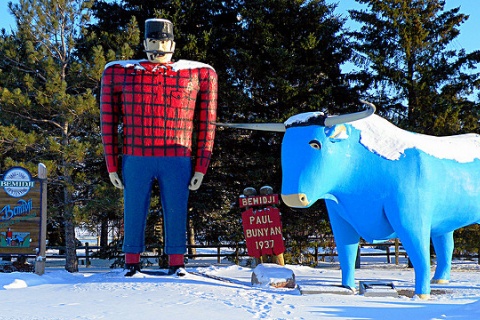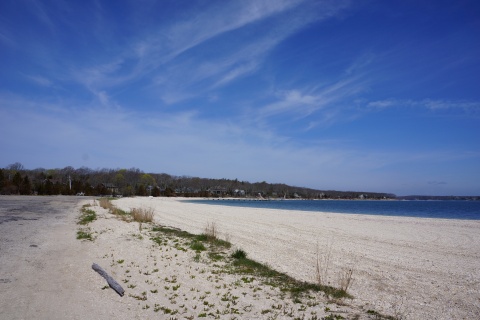Ann Arbor initiated the first community deer management program in the state of Michigan that combines lethal (paid sharpshooting) and non-lethal (surgical sterilization) approaches.
Community Examples
If deer are decreasing the quality of life in your community, Community-based Deer Management (CBDM) offers a way forward. In cities and suburbs across America, citizens are sitting down together, actively learning about deer impacts and solutions and taking on deer management at a local level. In this growing collection you’ll find recent startups, programs that have been underway for decades, and everything in between.
Regardless of your community’s starting place, browsing these examples is a great place learn about what has worked well—and what hasn’t—in similar settings
Want to tell your story?
Add your community’s deer management story! It’s easy to do. Get started by filling out a simple form and we will send you detailed instructions.
Find Community Examples
Midwest
The Mayor of Shaker Heights, Ohio formed the community's Deer Task Force in 2015 to define deer-related problems by collecting data on how often residents see deer in their neighborhoods, deer-related concerns, and whether deer have damaged property or landscaping.
Deer management in East Lansing began with citizen education and a deer feeding ban. The community also passed an ordinance opening the door to more active management in the future, should non-lethal means fall short of program objectives.
Meridian Township uses a combination of professional sharpshooters and qualified volunteer bow hunters to reach the community's deer management objectives.
Cedar Rapids' deer management program features regulated hunting by licensed hunters during Iowa's regular hunting season, community education and annual monitoring.
A citizen Deer Committee oversees deer management in Fremont, Michigan. Sharpshooters from Fremont's police department have harvested hundreds of deer from defined areas.
Residents in Granville report a reduced number of deer-related problems since the initiation of managed bow hunting on public and private lands in 2007.
Implementation of the deer management program in Ames is overseen by the city's police department. An Urban Deer Task Force conducts an annual assessment of program effectiveness in meeting the community's desired deer density.
Muscatine researched best practices for deer management in other communities prior to establishing an an archery-only hunt on public and private lands.
Bemidji partners with faculty and students from Bemidji State University to conduct roadside surveys of deer populations in areas where management is being implemented.
Davenport's Urban Deer Hunt is managed through the city's Parks and Recreation Department as part of Iowa's Deer Management Zone Program, a cooperative initiative with the Iowa Department of Natural Resources.
Duluth, Minnesota has had an active deer management program since 2005. The Arrowhead Bowhunters Alliance runs the program, an archery hunt on both public and private lands.
Altoona, Wisconsin initiated its deer management program in 2004 with paid sharpshooters. Over time, the community adapted its program, which today is managed as an all-volunteer community hunt.
Leavenworth, Kansas manages deer on both public and private lands with an archery-only program overseen by a Deer Management Advisory Committee.
An archery only program, urban deer hunters are encouraged to harvest mature, antlerless deer. Hunting occurs on both public and private lands (5 acres or more in size) and is a collaboration between state and local agencies.
Brookfield's Deer Task Force coordinates with a neighboring community on tactics such as sharpshooting and signage placed in hotspots for deer-vehicle collisions.
Burnsville's 1998 natural resources planning process called for deer management. The city implements its program across 6 management units, and customizes the intensity and approach for each separate unit.
Elm Grove, Wisconsin's deer management program is coordinated with the neighboring city of Brookfield.
Dubuque's deer management program features managed hunts by regular, licensed hunters on both public and private lands throughout the city.
Northbrook, Illinois conducted a culling program from 1995 to 2008. The village conducted an assessment around this time, determined it had reached its management goals, and suspended the culling for the time being.
Northeast
The Town Board of Dewitt, New York struggled initially with developing a town-wide deer management plan. They adapted their approach by instead targeting the neighborhoods most impacted by deer overpopulation, and held their first managed hunt in 2017.
Trumansburg conducts an annual managed hunt at baited locations under a Deer Depredation Permit issued by the New York Department of Environmental Conservation.
Managed bowhunting on five public properties is the focus of Weston's deer management program, which also places an emphasis on educating its residents about forest stewardship.
Hopewell Township, New Jersey established its Deer Management Task Force in 2009 to create a Deer Management Plan, which was produced in 2010.
Upper Dublin Township's deer management program was initiated by its police department as an all-volunteer archery hunt. In 2016, the community is considering expanding the program to include sharpshooting.
Southold participates in New York's Deer Management Assistance Program and Deer Damage Permit "Nuisance" Program to obtain additional antlerless deer tags for licensed resident bowhunters.
Greenwich hired a wildlife management consulting service to conduct a deer cull on 4 city properties. The program is overseen by the city's Conservation Commission.
Mumford Cove's highly controlled annual hunt has been conducted since 2000 and has reduced deer-related impacts such as plant damage and Lyme disease incidence.
Cayuga Heights (population ≈ 3,700) is a residential community adjacent to a major university. Cayuga Heights' persistence in developing a robust community-based deer management program has paid off.
South
Hendersonville initiated its deer management program with the passing of a feeding ban ordinance. The community chose to assess the effects of the feeding ban prior to implementing other actions recommended by the community's deer committee, including baiting and sharpshooting.
Harpers Ferry's annual special archery hunt is conducted in partnership with the West Virginia Division of Natural Resources.
In 2009, Rockville revisited its 1995 White-tailed Deer Control Policy of "tolerance and coexistence" in light of increasing concerns over issues related to public safety (deer vehicle collisions) and human health (Lyme disease), as well as ecological and biological impacts and damage to residential landscaping. The city's 2012 White-tailed Deer Management Plan summarizes these problems and how the community is addressing them.
West
Citizens of Sheridan control the community's deer herd by participating in a volunteer archery-only program to address deer-related property damage and deer-vehicle collisions.
































